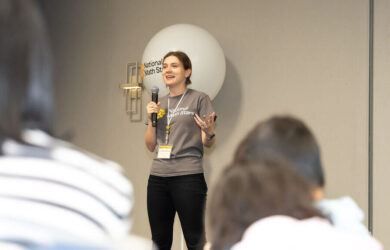
Antonia Netzl is co-author of a study on Covid variants which has implications for vaccine development
Our work presents an important contribution to the discussion on vaccine updates to improve protection against current and future emerging SARS-CoV-2 variants.
Antonia Netzl et al
All the omicron strains are different from the original COVID infection and from each other, but repeated exposure to pre-omicron variants can protect against omicron variants, according to a new study which has implications for further vaccine development.
The study, BA.2 and BA.5 omicron differ immunologically from both BA.1 omicron and pre-omicron variants, is published in Nature Communications today and is co-authored by Gates Cambridge Scholar Antonia Netzl.
It looked at the original omicron variant [BA.1] and sought to compare whether the BA.2 and BA.5 sub-variants which soon replaced it in many countries were more resistant to COVID vaccines.
Using people with differing histories of exposure to infection and vaccination, they found that unvaccinated people had limited cross-neutralising antibodies to pre-omicron variants and BA.1 after a single exposure to BA.2.
By mapping all variants of concern and the omicron sub-variants, they showed that all the omicron sub-variants are distinct to pre-omicron variants, but that the three omicron variants are also antigenically distinct from each other.
Moreover, antibodies that can fight the virus are only generated after three or more exposures to antigenically close variants and also after two exposures to antigenically distant variants.
They say: “Our work presents an important contribution to the discussion on vaccine updates to improve protection against current and future emerging SARS-CoV-2 variants. It suggests that cross-neutralisation improves with repeated exposure and an increase in absolute titers of antibodies and that exposure to two distant variants has protective potential against emerging variants with some degree of similarity to currently and previously circulating Variants of Concern.”
*Picture credit: https://www.vperemen.com / CC BY-SA 4.0 and Wikimedia Commons.












